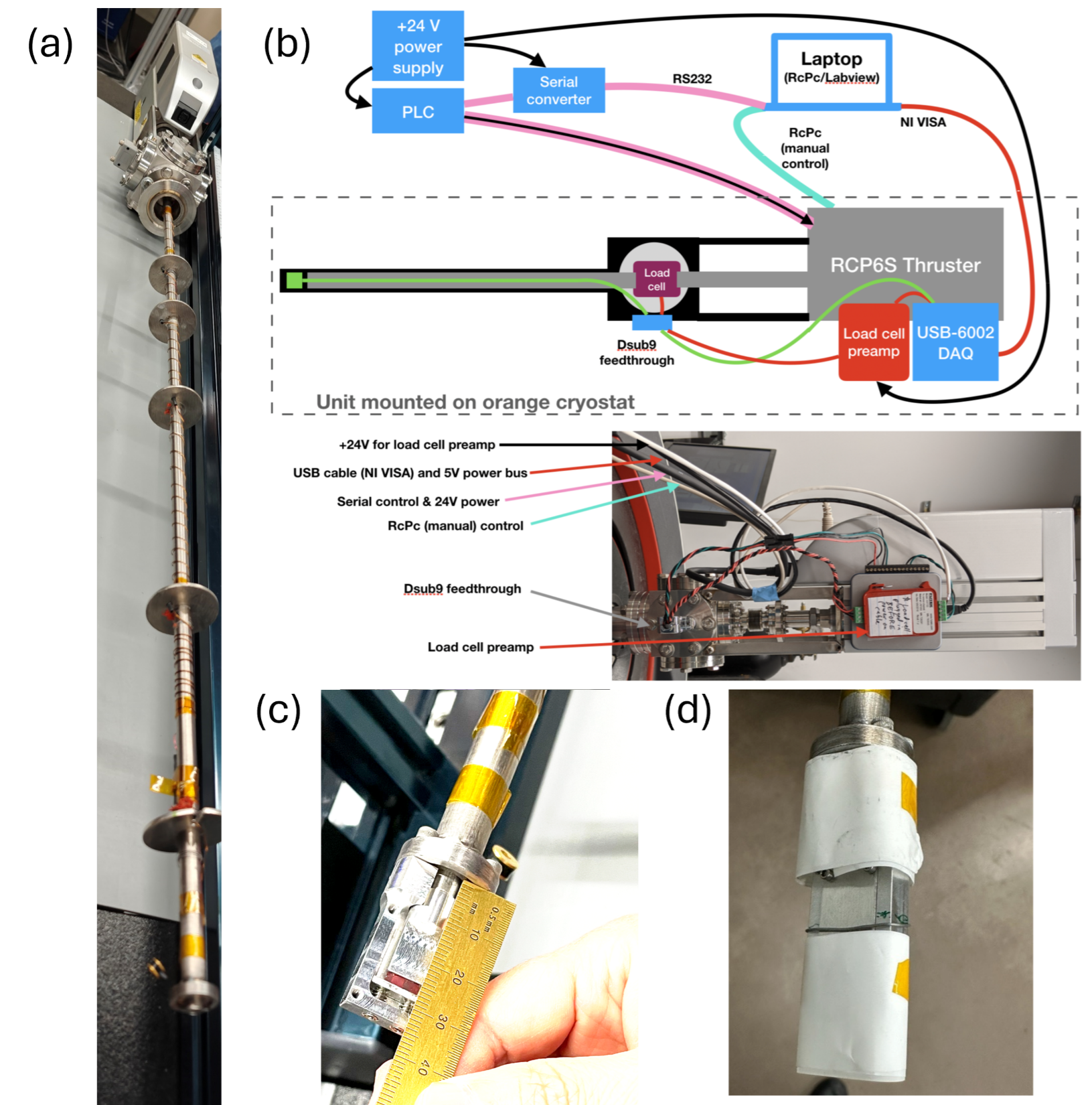Uniaxial pressure cells and devices
A uniaxial pressure stick is available in the user program on multiple beamlines at HFIR including WAND2 and four triple-axis spectrometers VERITAS, CTAX, TAX and PTAX. The stick is compatible with liquid helium cryostat (1.8K-300K) and 6 Tesla Vertical Field Magnet (1.8K-300K, 0-6T) facilitating in situ control of uniaxial pressure for single crystal neutron scattering studies. Up to 300 lbs calibrated force can be applied and transmitted to the sample by a rigid rod. The stick is the 3rd generation instrument designed and built for ORNL in collaboration with the Rice University (link to the manual). An example publication from this instrument can be found here: Tam et al., PRB 95, 060505(R) (2017).
Note that sample preparation is the most critical step for a uniaxial pressure experiment. To apply uniaxial pressure along one specific crystallographic direction, the single crystal sample needs to be cut precisely with two parallel flat facets relative to its orientation and geometry. As illustrated in Figure. 1(c), the maximum sample dimension the cell can accommodate is ~4mm x 8.5mm (pressed area, flat facet area) x 10 mm (sample thickness along the applied uniaxial pressure direction). Because the maximum force can be applied on the sample is 300 lbs, smaller pressed area is preferred if you want to apply higher uniaxial pressure, (e.g., the maximum pressure can be up to ~2 GPa if the pressured area is 1mm2).
Please contact the beamline scientists for further details on possible experiments.
Figure. 1 (a) Picture of the uniaxial pressure stick in user program at HFIR; (b) Wiring diagram of the apparatus with actual cables. +24V power is supplied through cables shown in black, including one power line for the load cell preamp, and power for the RCP6S transmitted separately within the cable also used for serial communication (pink/black). (c) Picture of the sample holder cell made of aluminum. The sample is squeezed between the pushing rod and bottom spacer for neutron scattering experiments. (d) Cell enclosed by a thin aluminum plate as a safety precaution of radioactive materials. Gadolinium oxide sheets were attached at top and bottom of the cell to reduce the background.



